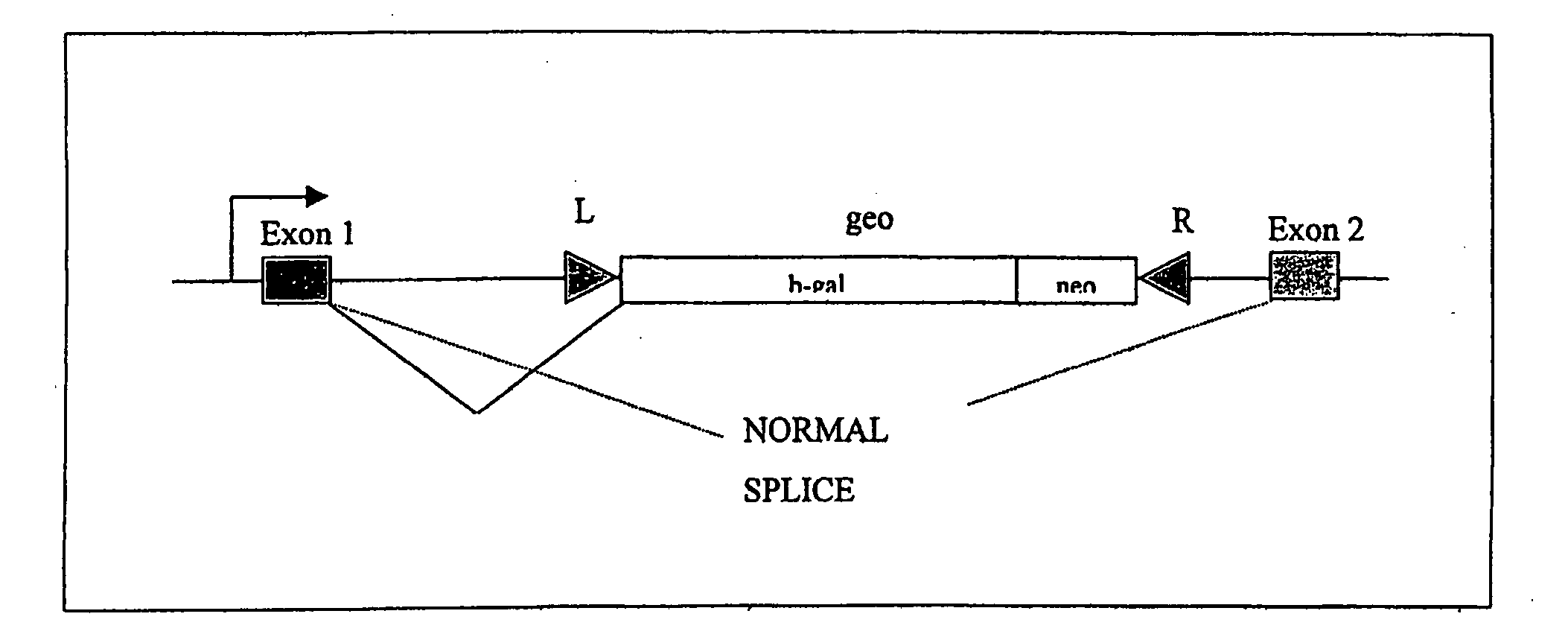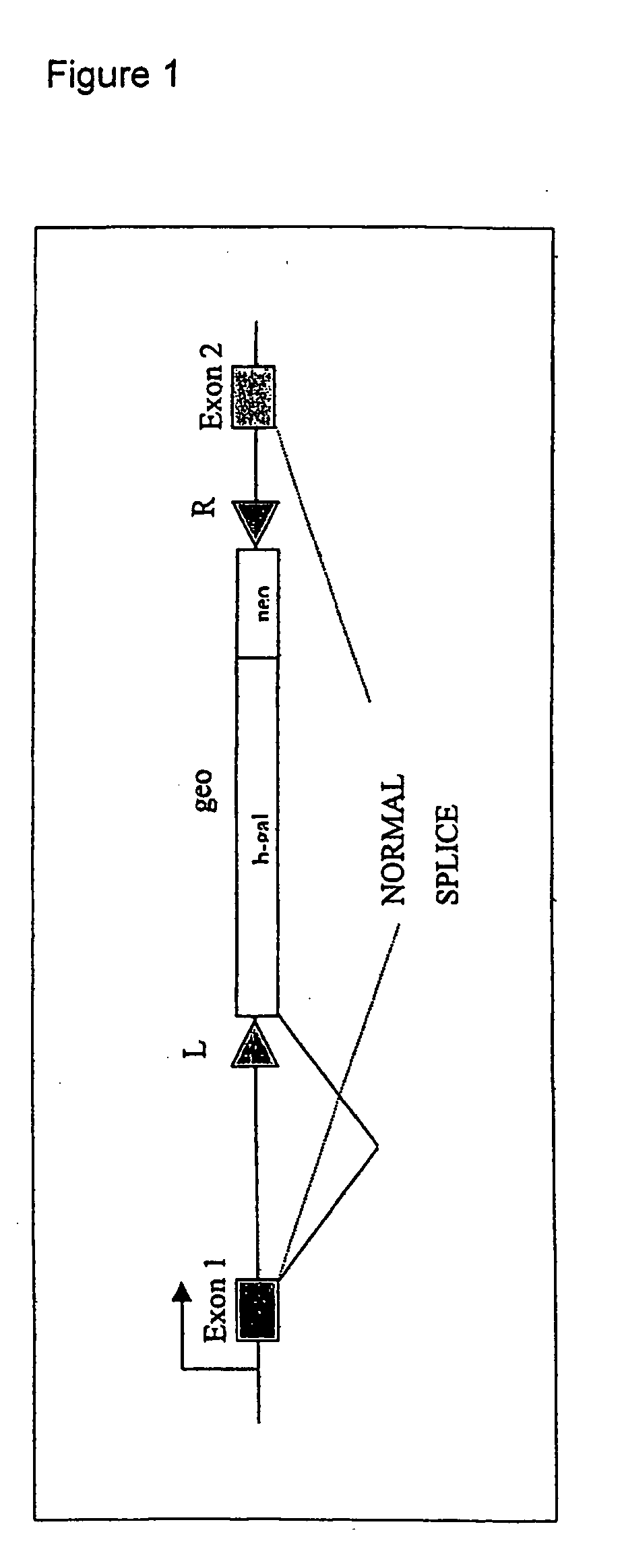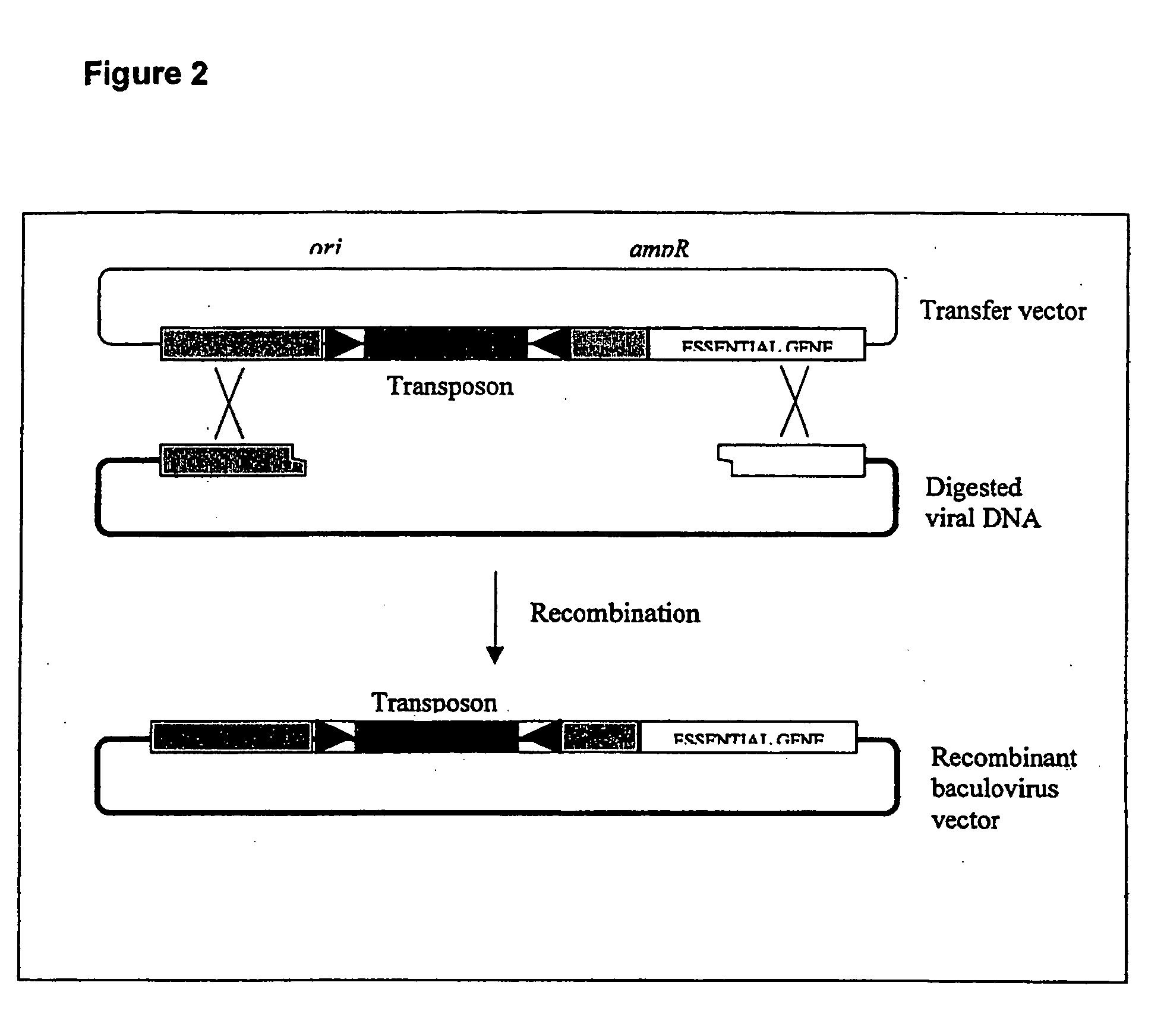Insertional mutagenesis technique
a mutagenesis and insertion technology, applied in the field of insertional mutagenesis technique, can solve the problems of inability to reliably achieve transposon, inefficient use of dna vectors to deliver transposase genes, inability to mobilize transposons, etc., and achieve the effect of modulating the expression of the marker observed
- Summary
- Abstract
- Description
- Claims
- Application Information
AI Technical Summary
Benefits of technology
Problems solved by technology
Method used
Image
Examples
example 1
[0110] Use of Baculovirus for High Efficiency Introduction of Transposons into Cells Expressing Transposase
[0111] The Autographa califomica nuclear polyhedrosis virus (AcNPV) is the most commonly used virus for expression of heterologous proteins. Vectors are available commercially, for example from Clontech, from whom detailed descriptions thereof may be obtained.
[0112] A brief description of the construction of a recombinant AcNPV comprising a transposon comprising an exon trap is given below:
[0113] A. Transposon.
[0114] The transposon is Minos exon trap vector pMiLRgeo, described in Klinakis et al. 2000 EMBO Reports 1: 416-421. MiLRgeo comprises a gene trap construct, consisting of a splice acceptor site followed by an in-frame fusion of the E. coli beta-galactoside gene with a prokaryotic gene conferring resistance to the antibiotic neomycin (a gene trap fusion referred as geo, Scarnes et al., 1995, Proc. Natl Acad. Sci. USA, 92, 6592-6596). The geo gene does not contain a transl...
example 2
[0124] Use of Baculoviruses to Introduce Transposons into Eukaryotic Cells
[0125] Summary
[0126] A. The use of transposable elements as genome-wide insertional mutagenesis agents can be limited by low transfection rates of DNA into cells. One possible way to overcome this obstacle is to use a high-infectivity virus as a vehicle to introduce transposons into cells. We have tested the ability of a Minos transposon to transpose, in the presence of cognate transposase, from recombinant baculovirus carrying the transposon, into chromosomes of infected mammalian cells. Recombinant Autographa californica nuclear polyhedrosis virus (AcNPV) was constructed containing a Minos transposon carrying an antibiotic resistance marker gene. Recombinant virus was used to infect a cell line in the presence and absence of transposase and numbers of stably transformed colonies were determined after selection with antibiotic. The presence of transposase resulted in 200-400fold stimulation of stable integrat...
example 3
[0151] Use of Retrovirus Vectors for Introduction of Transposons into Cells Expressing Transposase
[0152] Construction of Retroviral Vectors
[0153] The transposon is cloned into a retroviral / lentiviral vector by standard recombinant DNA techniques (see e.g. Hoeflich et al 2000, nature 406, p82, where a .beta. globin cassette is exchanged for a lacZ cassette in an existing retroviral vector). The recombinant transposon / viral vector plasmid DNA is isolated by standard procedures and transfected into the viral packaging cell line as described (Hoeflich et al., 2000). Virions are collected and concentrated as described by Gallardo et al., 1997 (Blood, 90, 952-57). Target cells are infected in the presence of polybrene (8 .mu.g / ml) as described by Sadelain et al., (PNAS 92, 6728-32, 1995) to establish the starting population of cells containing a transposon insertion after viral integration.
[0154] The starting population of target cells for infection are either established cell lines, prim...
PUM
| Property | Measurement | Unit |
|---|---|---|
| Mass | aaaaa | aaaaa |
| Mass | aaaaa | aaaaa |
| Mass | aaaaa | aaaaa |
Abstract
Description
Claims
Application Information
 Login to View More
Login to View More - R&D
- Intellectual Property
- Life Sciences
- Materials
- Tech Scout
- Unparalleled Data Quality
- Higher Quality Content
- 60% Fewer Hallucinations
Browse by: Latest US Patents, China's latest patents, Technical Efficacy Thesaurus, Application Domain, Technology Topic, Popular Technical Reports.
© 2025 PatSnap. All rights reserved.Legal|Privacy policy|Modern Slavery Act Transparency Statement|Sitemap|About US| Contact US: help@patsnap.com



